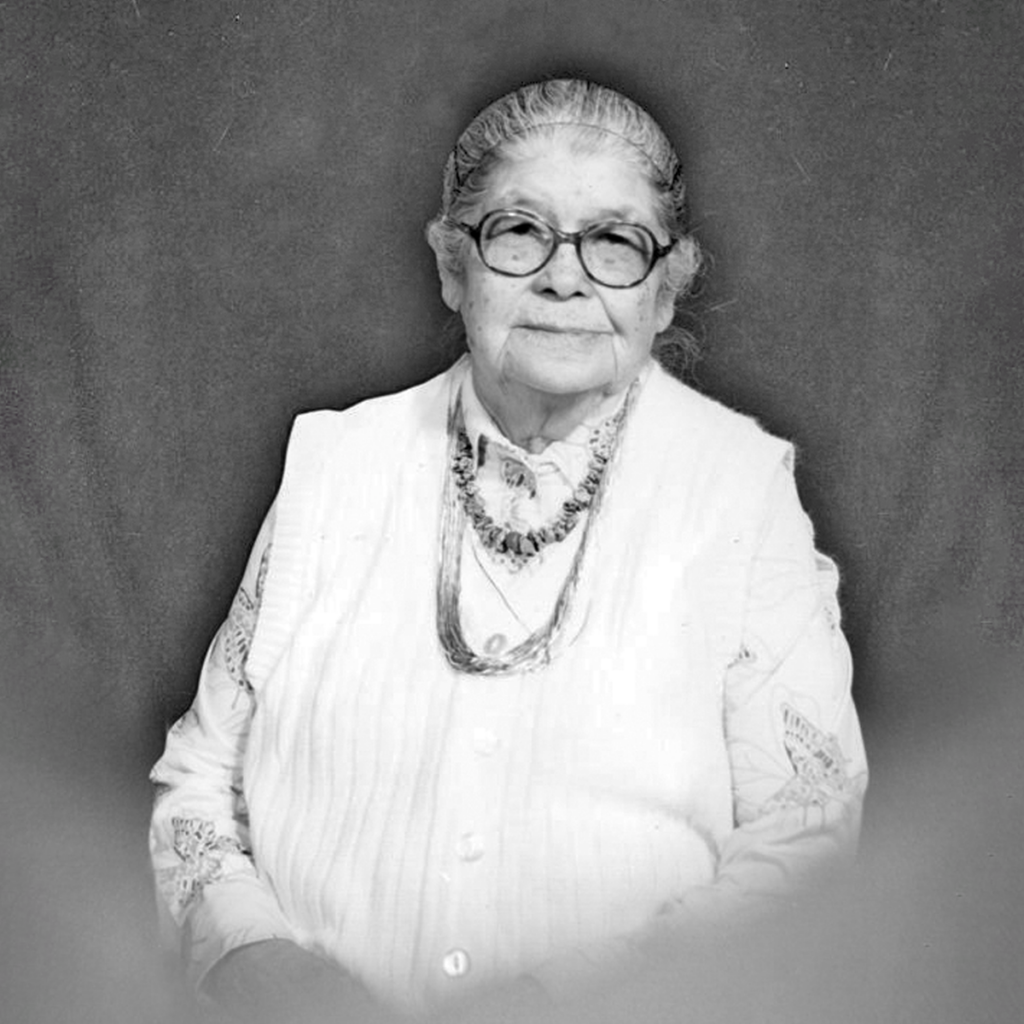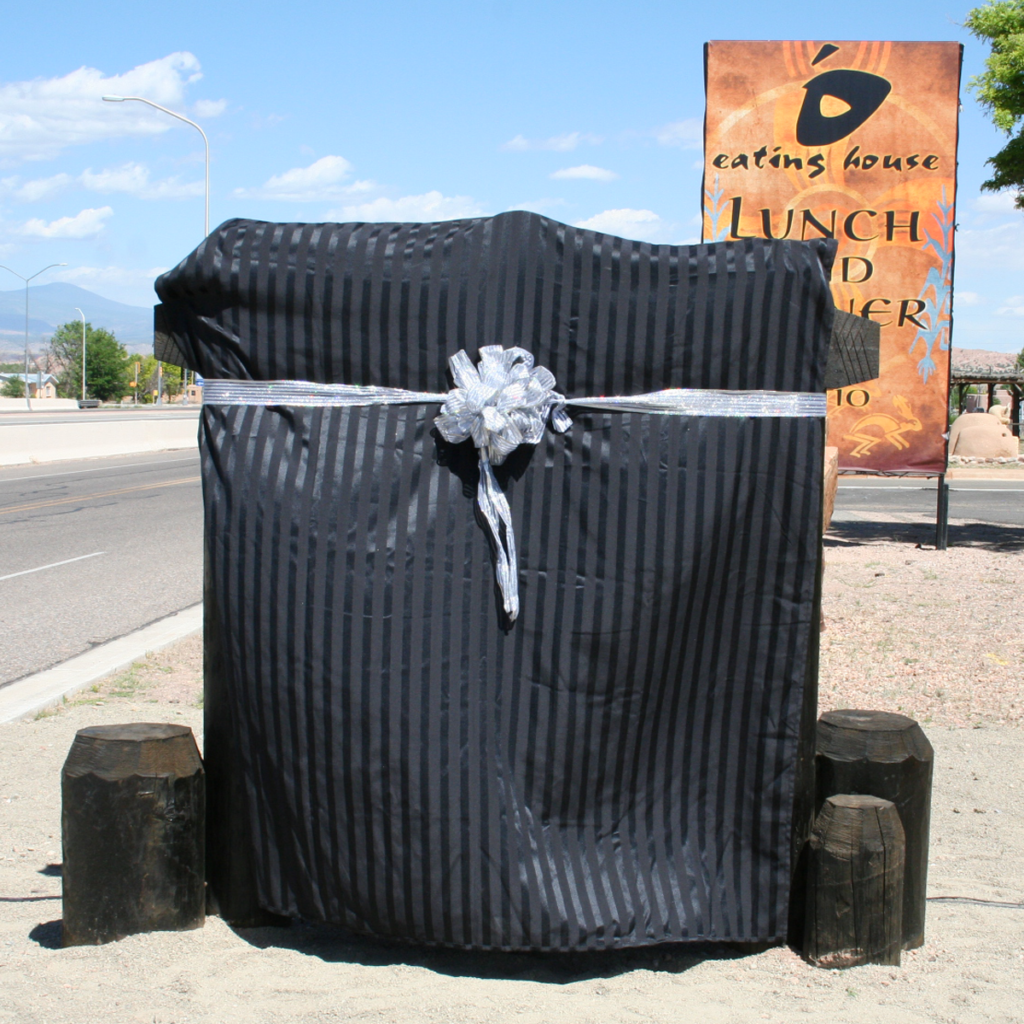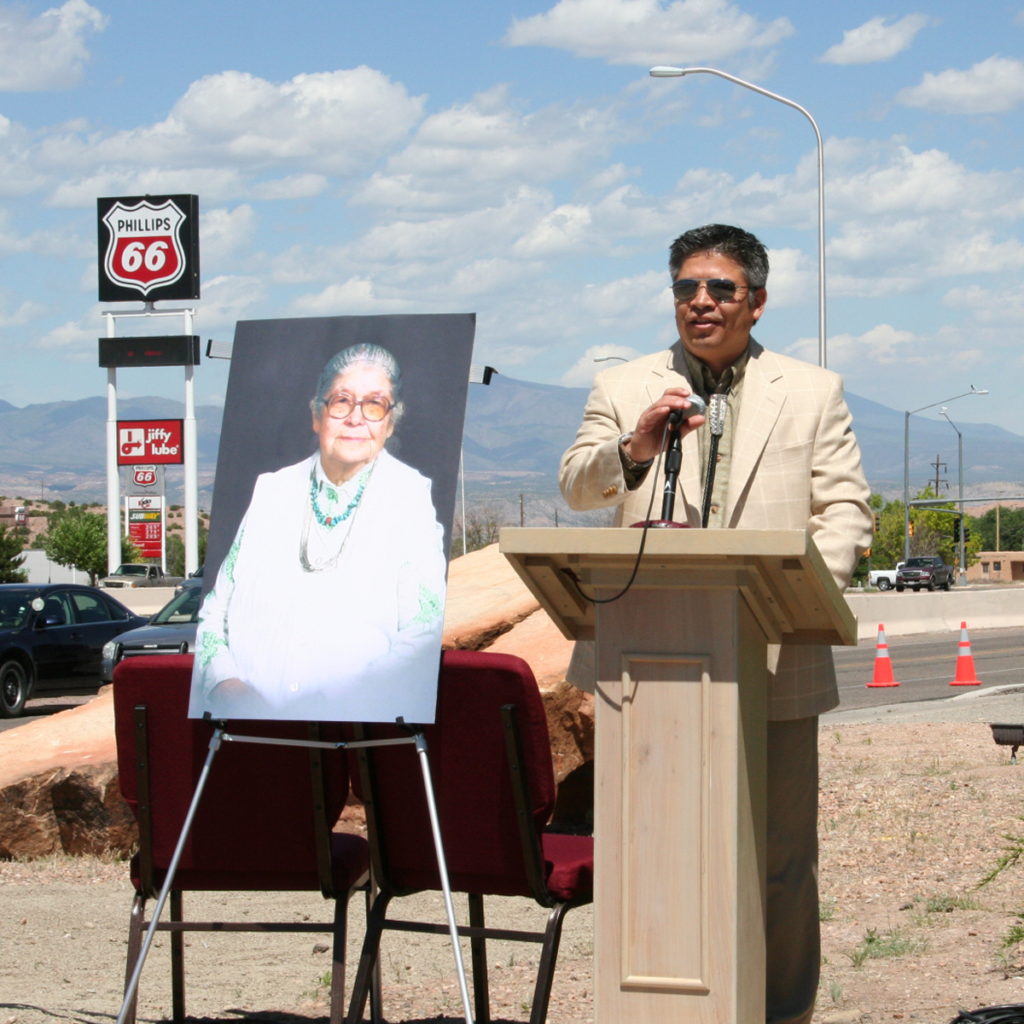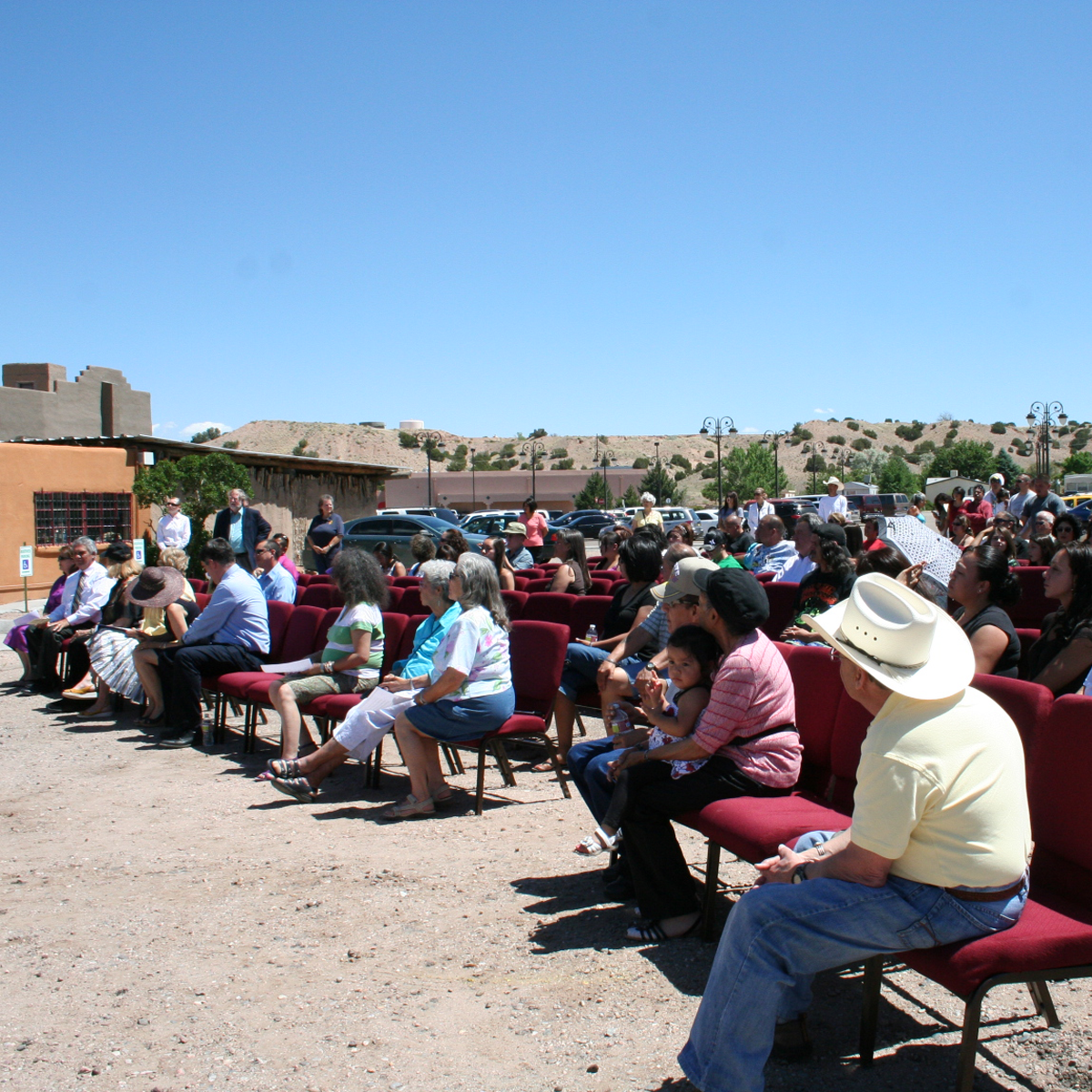Feliciana Tapia Viarrial.
Photo Credit: Courtesy of New Mexico Historic Women Marker Program. Courtesy of New Mexico Historic Women Marker Program. Courtesy of New Mexico Historic Women Marker Program. Courtesy of New Mexico Historic Women Marker Program.
Feliciana Tapia Viarrial
1904 - 1988
Santa Fe County
Mother of eleven, she helped re-establish the Pueblo of Pojoaque, a Tewa village founded circa A.D. 1000. After the U.S. Federal government restored the Pojoaque homelands in 1932, she returned and served as a matriarch of the community as it revitalized its culture.
Feliciana Tapia Viarrial was born in 1904 into a family from Pojoaque, or Posuwageh, water drinking place, a Tewa village founded around A.D. 1000. By 1913, the Pojoaque homelands were severely diminished. Most members left for neighboring Pueblos and Colorado. The families, including Feliciana’s, returned after 1932 when the federal government restored their homelands. A mother of eleven, Feliciana served as a respected matriarch of the community and helped restore and revitalize the culture.
Like other Pueblo communities, the Tewa-speaking community north of Santa Fe experienced rises and falls in population throughout its history due to disease, warring, and encroachment of non-Indians onto Native lands. By 1913, Pojoaque homelands had been severely diminished and members sought refuge in Colorado and neighboring Pueblos. In the years since circumstances forced members to flee in the early twentieth century, the community has undergone a remarkable cultural revitalization.
Congress passed the Pueblo Lands Act in 1924, which created a Pueblo land board to investigate Pueblo titles to land grants. In 1934, the Pueblo Lands Board called for the return of Pojoaques to their village. Feliciana’s father, Antonio Jose Tapia, who was one of the last to leave Pojoaque in 1913, led the return, along with a few other families. Pregnant with her fifth child, Feliciana was among those returning. At the time of the exodus in 1913, she had been a student at Santa Fe Indian School and had remained in New Mexico until graduation, while her father and others moved to Colorado. On May 2, 1925, she married Fermin Viarrial of Chimayo, a small Hispano community north of Pojoaque.
Upon returning to Pojoaque, residents set about restoring important aspects of their culture. As in many pueblo communities, agriculture was an integral part of the Pojoaque culture and residents labored to reestablish its traditions and importance in community building. Although many Pueblos have sought work in non-farming jobs outside the community, customs continue to reflect the importance of this agrarian foundation.
Feliciana and her husband Fermin were farmers, and she helped other Pojoaque families ensure that their harvested crops would last throughout the year. She also contributed to the community in other ways, for example, cooking for the Pueblo of Pojoaque Senior Citizens’ Program, teaching embroidery, and serving as a member of the tribal council.
In a short time, Pojoaque has restored traditions and developed cultural and economic ventures. In 1991, the tribally run Poeh Center, a cultural institution aimed at preserving and revitalizing the traditions of Pojoaque and neighboring Pueblos, opened. The Pueblo also operates a casino and luxury hotel and resort.
Feliciana was a matriarch to the community in the truest sense of the word, nurturing efforts throughout the community as it reestablished roots, and raising eleven children and 120 grandchildren and great-grandchildren.
Sources:
Kessell, John L. The Missions of New Mexico Since 1776. Albuquerque: University of New Mexico Press, 1980.
Sando, Joe S. Pueblo Profiles: Cultural Identity through Centuries of Change.
Santa Fe: Clear Light Publishers, 1998.
Schaff, Gregory. Pueblo Indian Pottery: 750 Artist Biographies. American Indian
Art Series Two, Santa Fe: CIAC Press, 2000.
Viarrial, Feliciana (Tapia). Unpublished biographical sketch by Pojoaque Pueblo,
New Mexico Historic Women Marker Initiative archive, 2008.
D. C. Collier V. Petra Boquet, Suit to Quiet Title in Equity, No.301, U.S. District Court, February 1914.
Sando, Joe S. Pueblo Nations: Eight Centuries of Pueblo Indian History. Santa
Fe: Clear Light Publishers, 1998.
Sando, Joe S. Pueblo Profiles: Cultural Identity through Centuries of Change.
Santa Fe: Clear Light Publishers, 1998.
Directions:
Feliciana Tapia Viarrial
Santa Fe County
Community leader | Cultural preservationist |
Statehood (1912 - present) | Territorial Period (1848 - 1912) |
North Central











